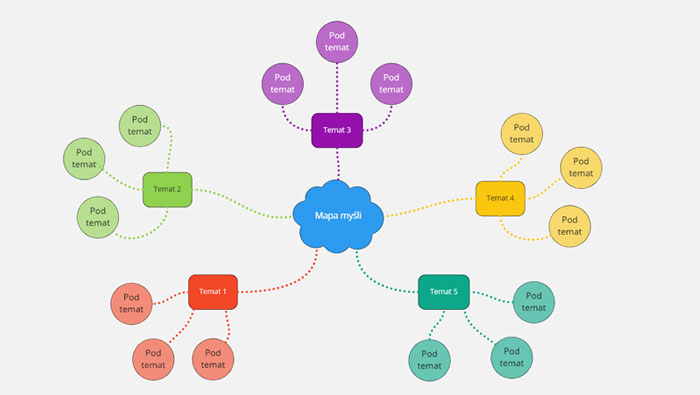
Find out more

Read the article

Find out more

Read the article

Find out more
The method is used to organise, structure and store knowledge. The basic idea of mind maps is to combine words and pictures to stimulate creativity for effective note-taking and learning. Mind maps have become an alternative of and a valuable addition to note-taking, which is traditionally based on linear notes.

Mind maps will be particularly useful for those students who experience difficulty in concentrating, procrastinate on tasks or feel that they are unable to learn a huge amount of material. They can also be useful for students with dyslexia, dysgraphia or Asperger syndrome, students who are hard of hearing or deaf, who have mental health difficulties and who cannot cope with information overload.
The widely proven benefits speak for themselves and prove that the investment into the change of thinking and organising information in the form of a mind map is well worth it (Piá et al. 2010). Creating a mind map helps to stimulate the imagination and at the same time form strong associations, i.e. connections and associations between elements, which stimulates long-term memory (Hay et al. 2008).
Mind maps can be used for the following purposes in the study process:
To summarise lectures. When we take notes in a linear fashion, we are passive recipients of the content. By creating a mind map of a lecture, we are engaged in understanding its content. A mind map can also be used for book summaries. Notes created in this way allow you to see connections between topics and the wider context. An overview of a topic starting from general to specific facilitates the understanding of the topic, which makes mind mapping one of the most effective methods of learning.
To provide information. Mind maps enhance communication - they can be an introduction to or a visual summary of a presentation. Mind maps are used by lecturers in their classes, but also by students who are asked to give a presentation. In some study programmes offered by the Jagiellonian University, lecturers conduct exams and tests in which students are required to create their own mind maps in order to test their knowledge.
To plan. With this method, you can organize your presentation outline, organize your table of contents and create a clear essay outline.
To remember information. Because mind maps require information to be presented in a condensed way, they force the designer to be creative. In this technique, drawings, pictograms and symbols have to be added. The specific process of writing makes us assimilate a great deal of information during the very process of creating mind maps. When creating graphic memos, the brain also gains a more pleasant way of encoding new information, which makes it remember things more quickly.
As training resources. Increasingly, mind maps are used as an important practical tool in individual and group teaching, and as a compilation of specialist knowledge (Papou, 2018). An example is the expanded Rheumatology Mind Map. The extensive information resources contained therein can be used by physicians during direct contact with patients and as an aid in preparing teaching activities for medical students. The website described above contains an expandable mind map with as many as over 1500 entries covering the full spectrum of rheumatic diseases. It is based on rheumatology practice in the UK and has direct web links to guidelines. The mind map includes diagnostic and classification criteria, response criteria, treatment regimens, assessment tools, downloadable templates, links to websites with advice for doctors and patients. It provides detailed information on clinical presentation, complications, prognostic markers, differential diagnosis and treatment. Mind mapping offers a new, structured approach to medical training. The main advantages of mind maps include quick access to relevant information, the ability to create hyperlinks, an intuitive visual interface and the ability to modify.
Research indicates that there are undeniable advantages of mind maps.
The effectiveness of remembering increases by at least 15% with the application of this type of a tool (Farrand, 2002). It is important to remember that the real benefits and applicability of mind maps depend on one’s own commitment to creating and using them. In order to take advantage of their potential, one must practice using them. The Jagiellonian University students may take part in the Tools for Effective Learning training series as part of the project ‘Responsible Support and Sustainability’ (PrzełamUJ), where they can learn how to create mind maps in practice. There are also online tutorials on how to create mind maps.
Bes P, Blasko E., Muñoz-Portero M., Different applications of concept maps in Higher Education Journal of Industrial Engineering and Management, Universidad Politécnica de Valencia, 2010. DOI: http://dx.doi.org/10.3926/jiem..v4n1.p81-102.
Buzan T., The Mind Map Book, BBC Active, 2009.
Farrand P., The efficacy of the 'mind map' study technique, Medical Education 36(5):426-31, University of Exeter, 2002. DOI: 10.1046/j.1365-2923.2002.01205.x.
Hay B., Kinchin I., Baker S.L., Making learning visible: The role of concept mapping in higher education, Studies in Higher Education 33(3), 2008. DOI: 10.1080/03075070802049251.
Pélissier C., Supporting Autonomy in a Higher Teaching Context, Support in Education, 2020. DOI: https://doi.org/10.1002/9781119777335.ch8
Papou A., Using mind mapping in learning and teaching rheumatology British Society for Rheumatology Annual Conference 2018 Abstracts, Oxford University Press, 2018. Source: https://academic.oup.com/rheumatology/article/57/suppl_3/key075.485/4971387